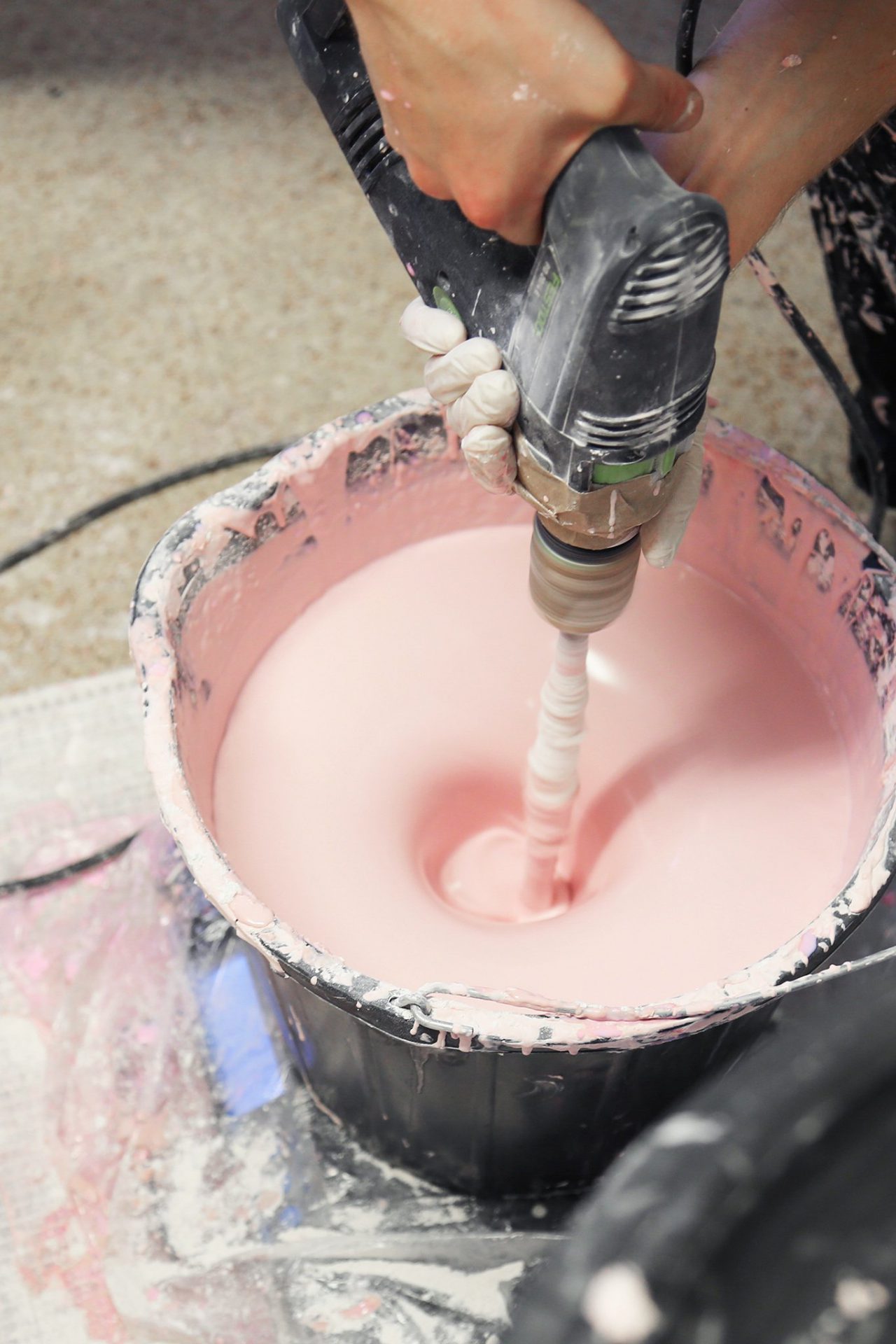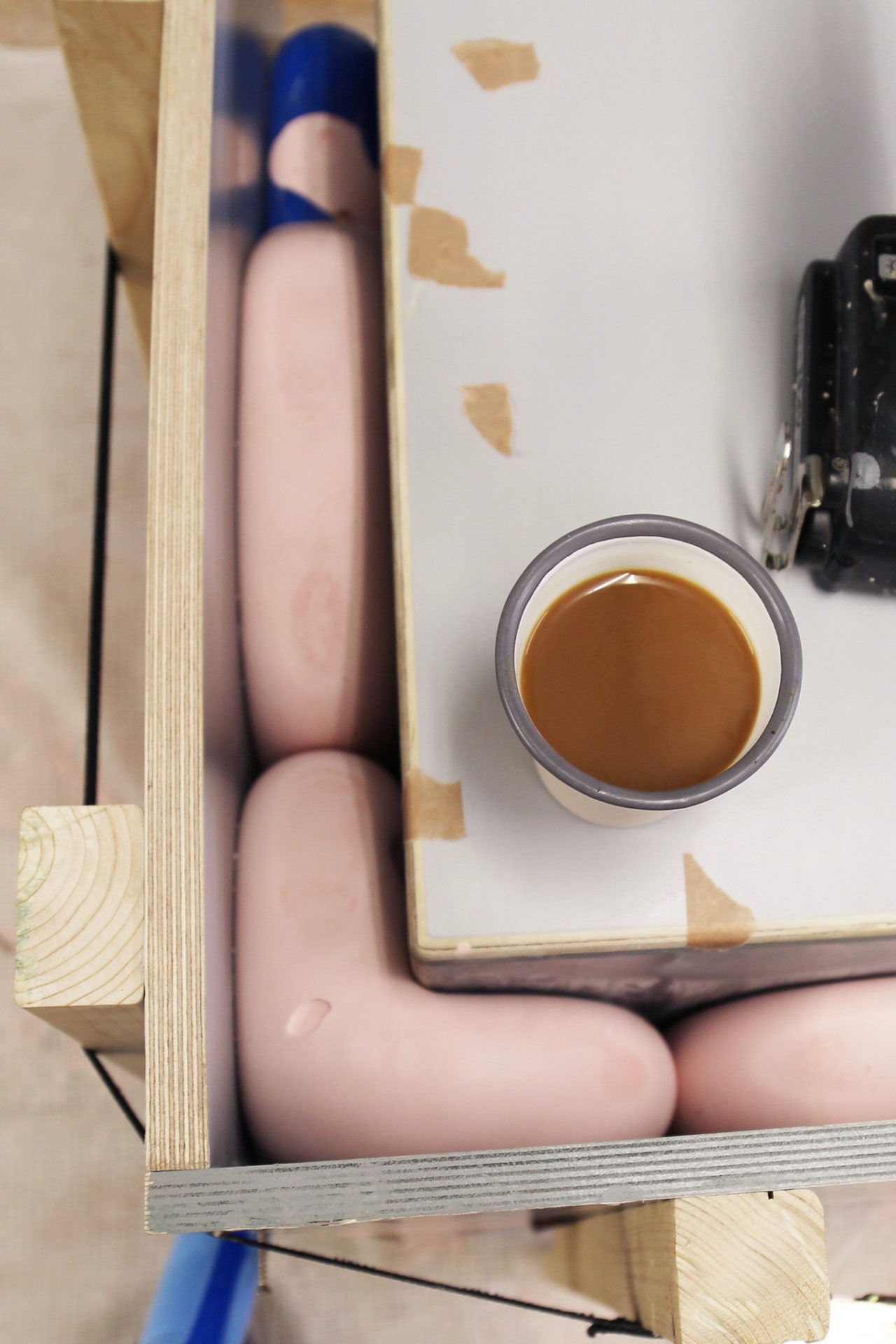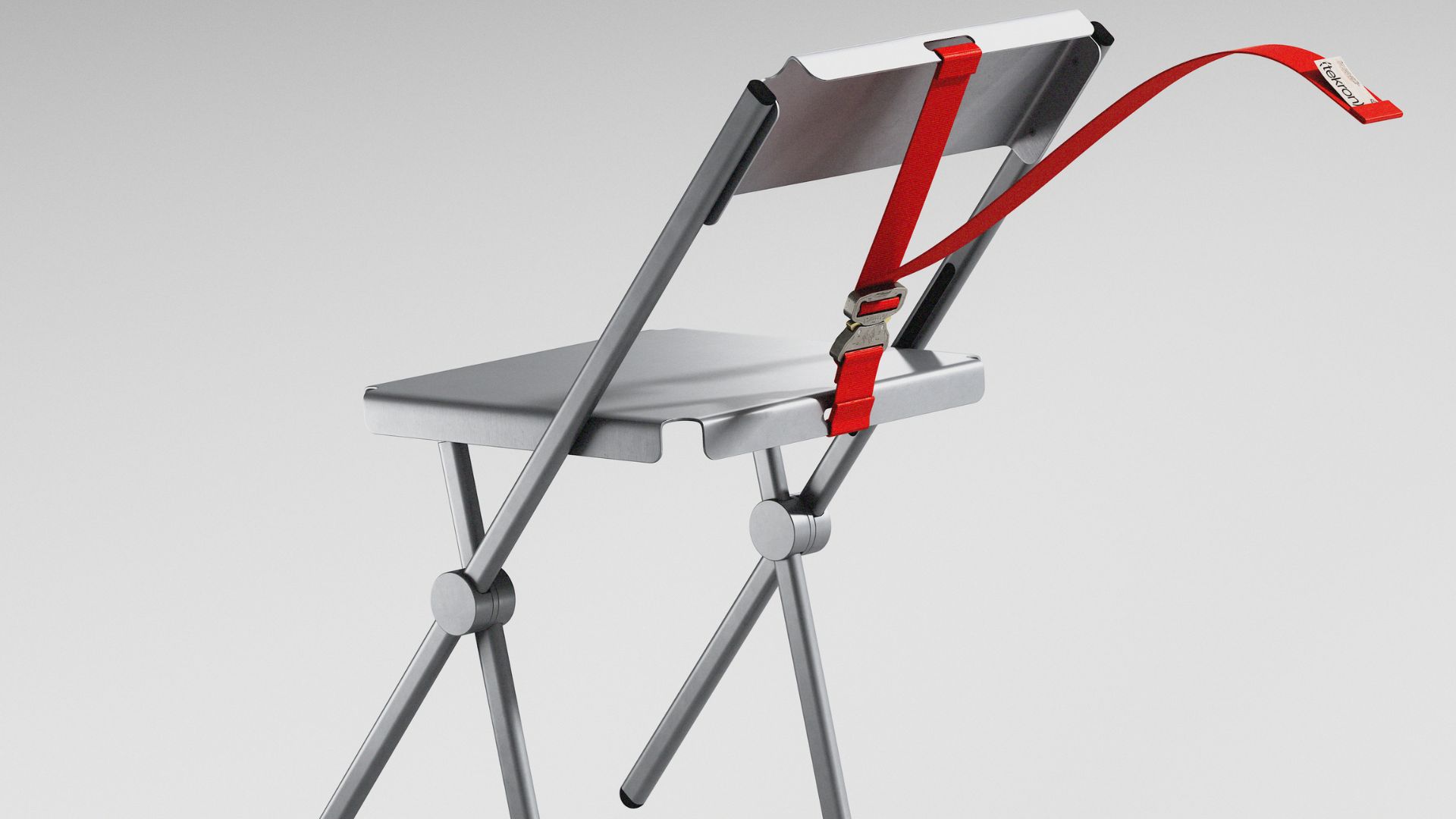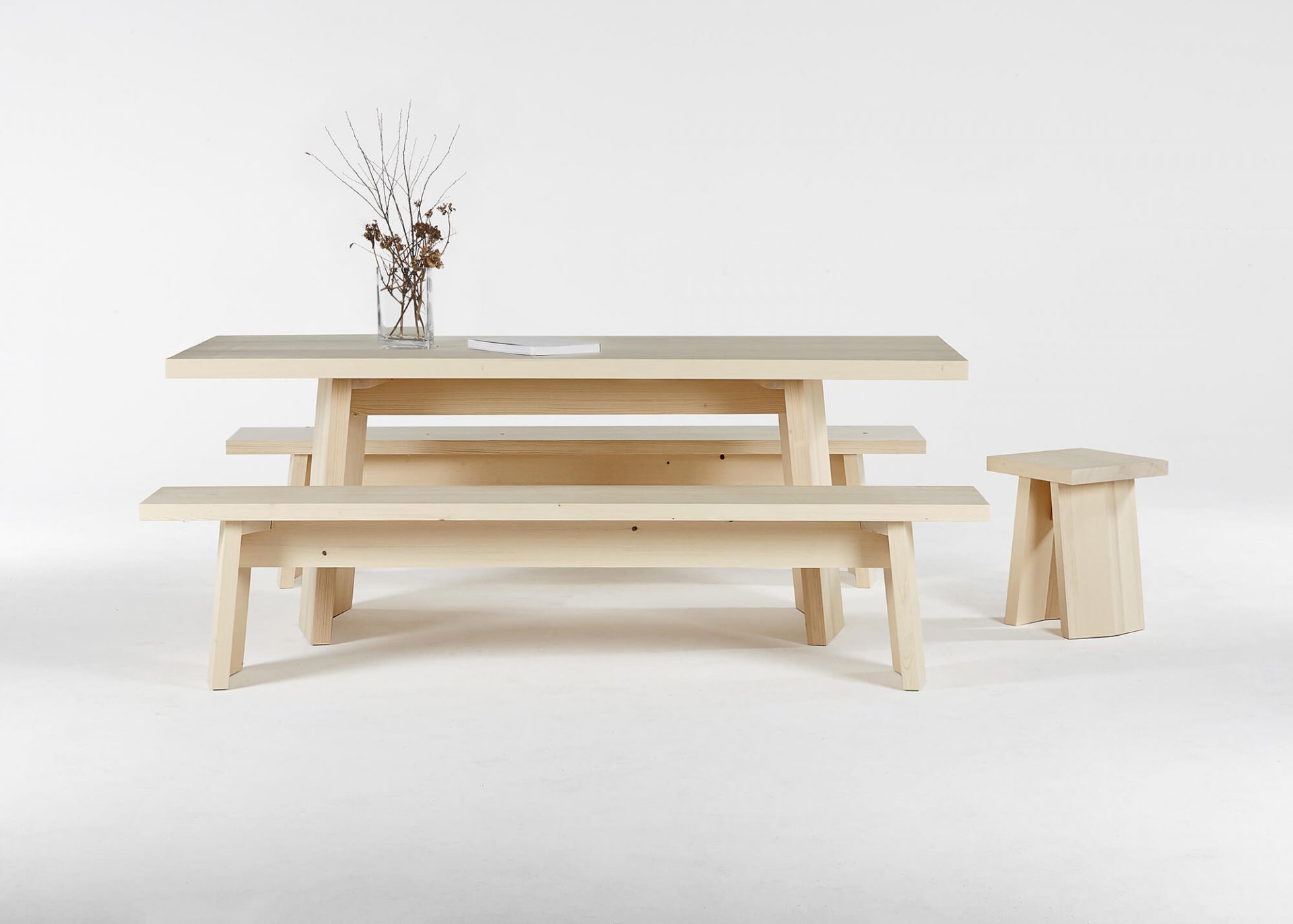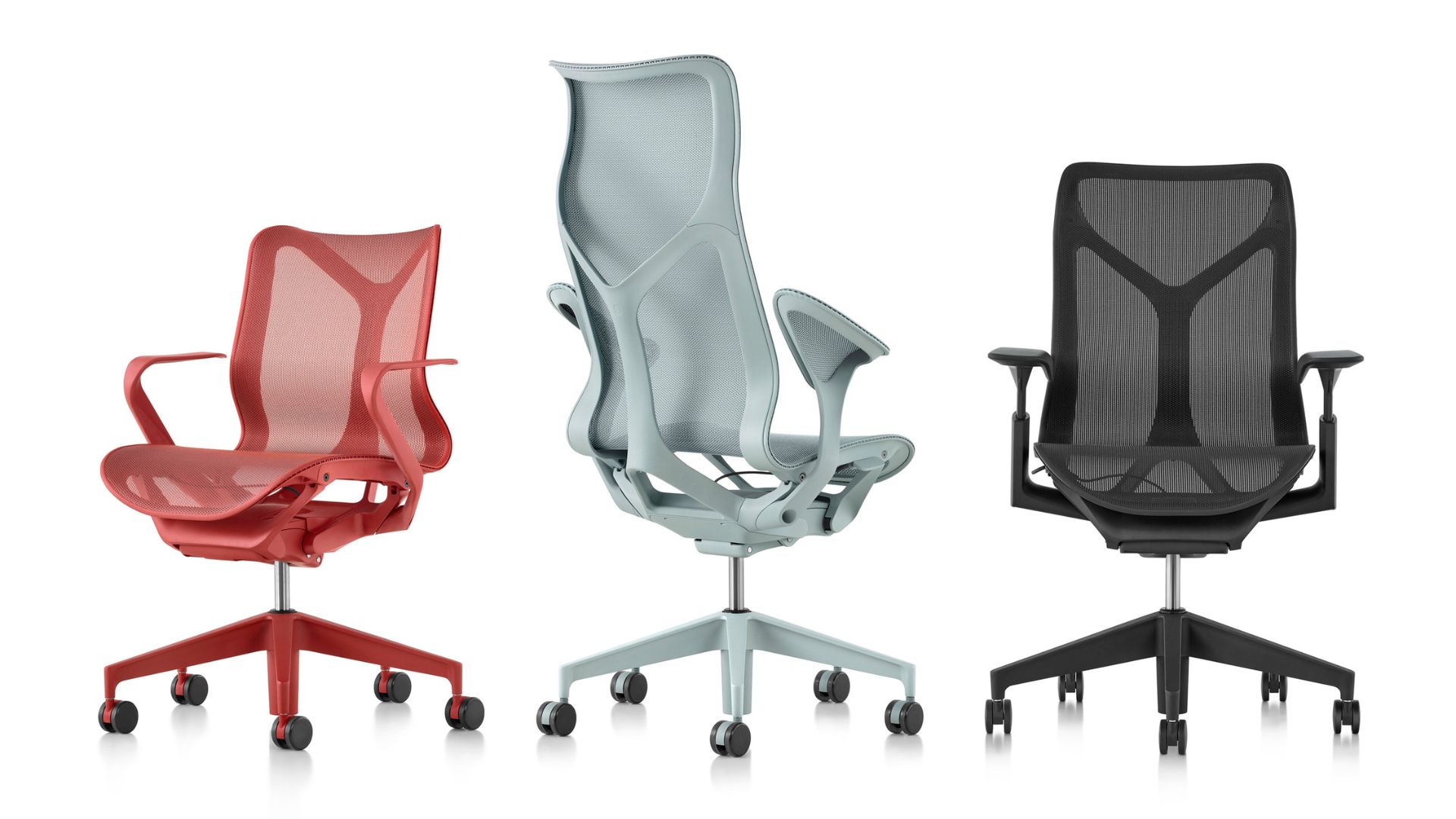Balloons full of concrete make ‘Puffy Bricks’
Playful ‘Puffy Bricks’ is a unique design technique which generates inviting and tactile concrete forms. No two ‘Puffy Brick’ furniture pieces will ever be the same.
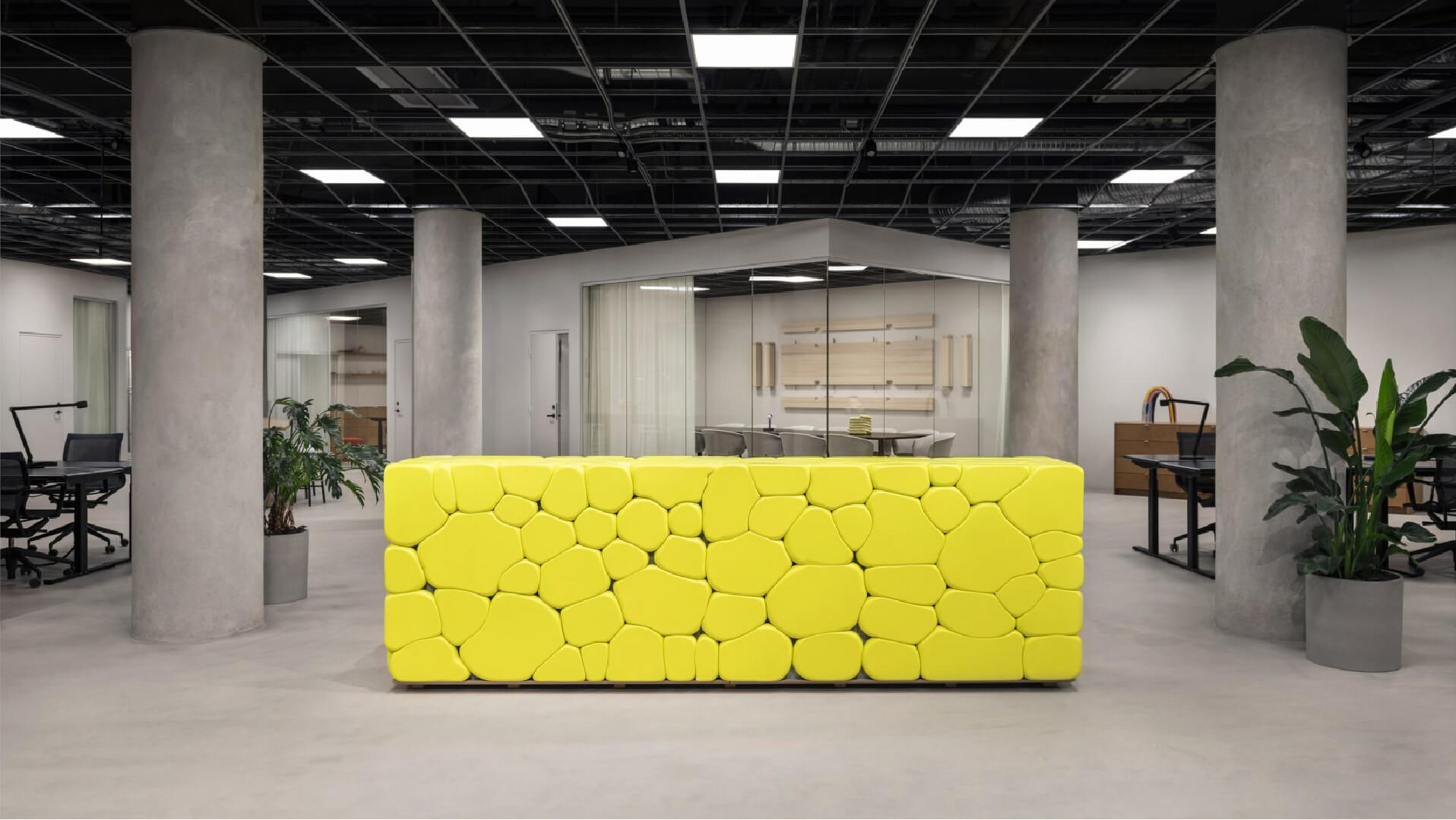
Are you ever compelled to touch concrete? Get the urge to squish it or stroke its hard smoothness? In this article, we decide to share the story of Puffy Bricks to explore materiality and frustrate our expectations of hard and soft.
This is exactly what you might find yourself drawn to do when standing near the new reception desk at the headquarters of design brand Hem, in Stockholm. Painted in bright Sulfur Yellow, the desk commands attention in the space and entices you in with its round squashed bubble shapes.
They describe their practice as focusing on “creating work with conflicting functions and imagery, without abandoning beauty or consumer logic”.

The minds behind ‘Puffy Bricks’ – Soft Baroque
Soft Baroque is the artist-designer duo Nicholas Gardner and Saša Štucin. The practice is based in London, where both Nicholas and Saša graduated from the Royal College of Art in 2013.
This interest is exemplified perfectly in ‘Surface Service’, where Soft Baroque gleefully disrupts our sense of material logic. Luxury veneers and granite are digitally scanned then printed onto silk fabrics and used to create a range of interior design objects.
Similarly, in their 2017 project ‘Finger Tables’, traditional wood joinery techniques are transposed into stone. These are constructed with Alusid—a new material made from recycled ceramic and glass.

Materials and Techniques – Unique concrete bricks
Each unique set of ‘Puffy Bricks’ is created by injecting Jesmonite into balloons, with the help of a large syringe pump. The filled balloons are then slid into a mold that defines the shape of the final piece. Gravity does the job of nestling the balloons neatly on top of each other.
Once set, the bricks are all numbered and disassembled for the balloons to be removed, then reassembled. The technique was invented when Soft Baroque was first commissioned by Hem 2018 to create a furniture piece for their pop-up shop. The result was a striking and playful pink counter.
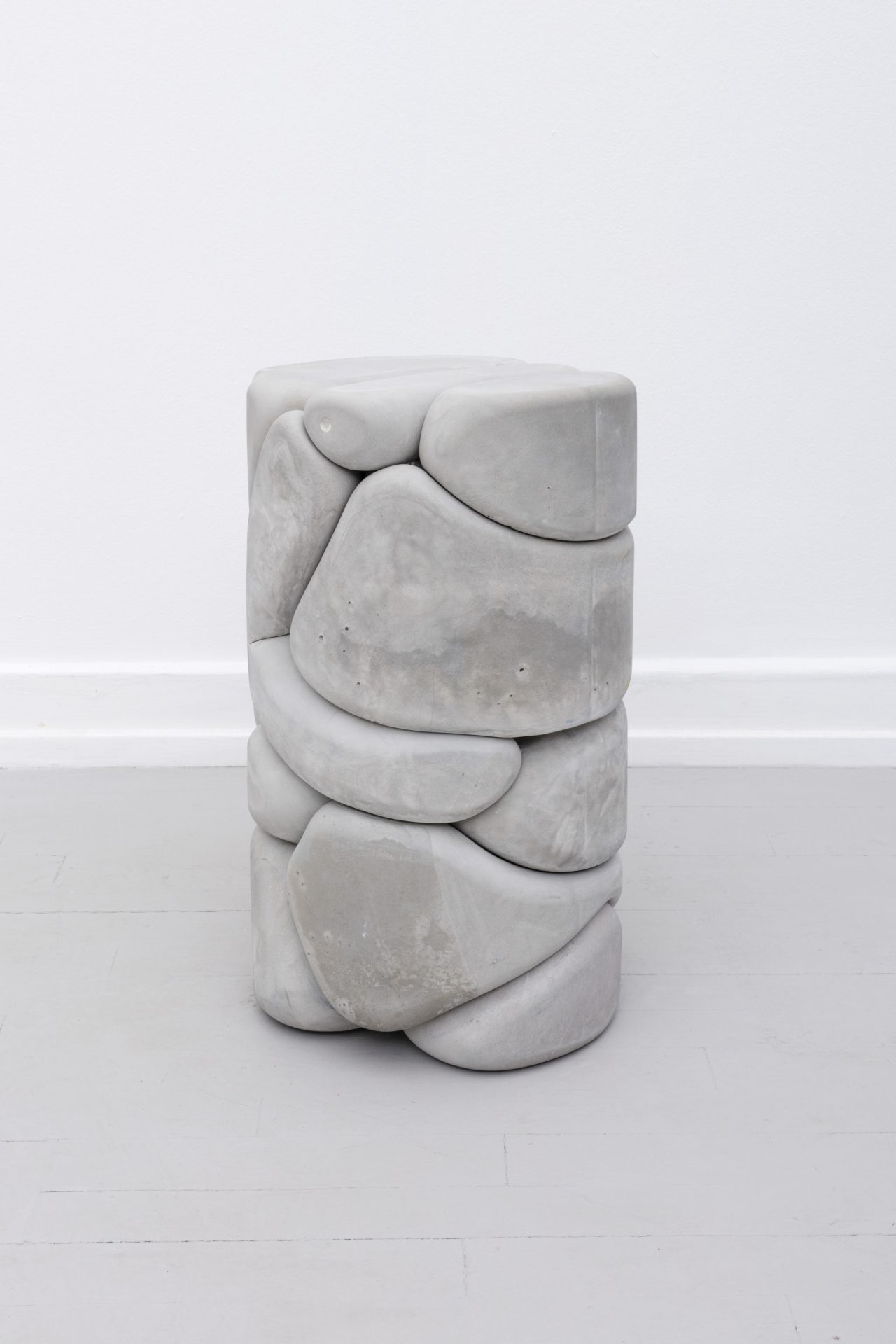
Style & Aesthetics – Playful functionality
The work of Soft Baroque is all about material critique and aesthetic play. The style of each project comes from the specific materiality being explored. But, it is always underlined by a simple, clean functionality.
The look of ‘Puffy Bricks’ directly emerges from the process of creation. At first glance, they seem to defy any logical process, but they are practical and durable pieces that have obviously been created with function in mind.
Like cells or a Voronoi diagram, the shapes interlock and fill out the form of each piece. They evoke ideas of both the digital and the organic.

Unintentional progressive architecture
The original inspiration for ‘Puffy Bricks’ came from a trip to Naples. During their visit, the pair marveled at a seawall held up by a stone arch. After years of the water lapping at the stones, they had become rounded.
As Nicholas describes it, “it was a rational object that became decorative, almost comical. It got stuck in our heads as the representation of an unintentional piece of progressive architecture.”

Design Memento – Repurpose and rethink
With ‘Puffy Bricks’, Soft Baroque takes one of the most ubiquitous and often unremarkable construction materials used today and reconceptualizes it.
Painted in bright blue or yellow the ‘Puffy Bricks’ look soft and inviting. The cartoon-style happy rounded shapes contrast with our preconceived images of what concrete is. It is no longer the anonymous material of mass construction, but a one of a kind crafted object.

The writer’s comment – Art or Design?
No two ‘Puffy Brick’ furniture pieces will ever be the same. So it is no wonder that they feel closer to an art object than to mass-produced furniture. And, you are more likely to see a Soft Baroque piece in a gallery than on a showroom floor.
‘Puffy Bricks’ fall into a category of unique collectible design objects. They deliberately question and confront our typical notions of the conceptual, functional and aesthetic.

This places them firmly at the intersection of the two disciplines— art and design. A space that is increasingly being recognized and populated.
Nicholas explains: “in some ways, you can get away with so much more in design because the critical level is not as vigorous. But on the other hand, to make something hold together and function can be so much more complex.”












